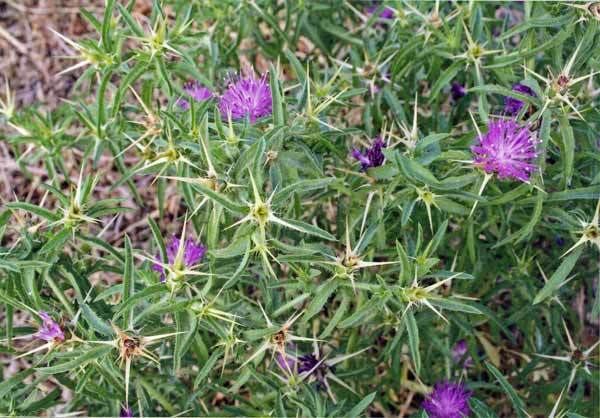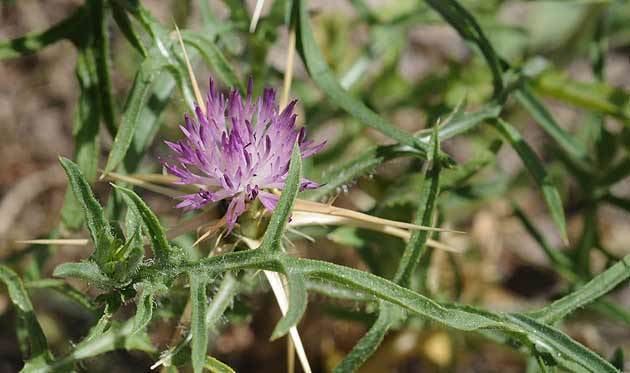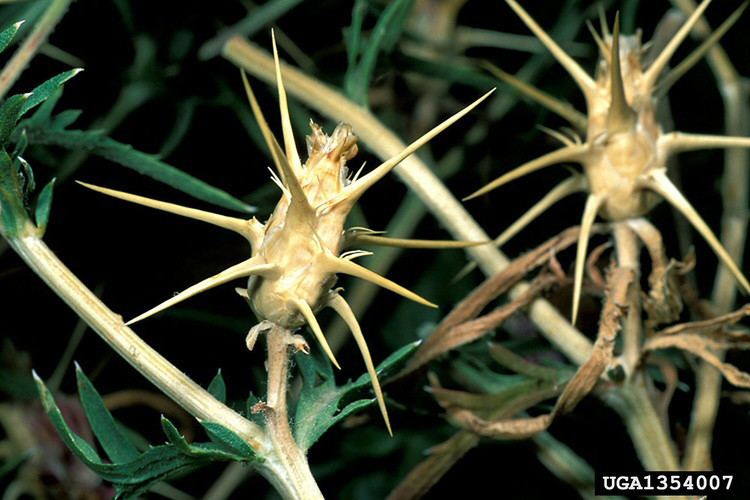Tribe Cynareae Rank Species | Genus Centaurea Higher classification Knapweeds | |
 | ||
Similar Knapweeds, Daisy family, Centaurea solstitialis, Centaurea melitensis, Centaurea diffusa | ||
Tertiary ingredients of centaurea calcitrapa formulations pankaj oudhia s medicinal plant database
Centaurea calcitrapa is a species of flowering plant known by several common names, including red star-thistle and purple starthistle. It is native to Europe but is rarely found there, it is known across the globe as an introduced species and often a noxious weed. The species name calcitrapa comes from the word caltrop, a type of weapon covered in sharp spikes.
Contents
- Tertiary ingredients of centaurea calcitrapa formulations pankaj oudhia s medicinal plant database
- Description
- Distribution
- Similar species
- References

In western Crete, Greece a local variety called gourounaki (γουρουνάκι - little pig) has its leaves eaten boiled by the locals. A south Italian variety of the species is also traditionally consumed by ethnic Albanians (Arbëreshë people) in the Vulture area (southern Italy). In the Arbëreshë communities in Lucania the young whorls of Centaurea calcitrapa are boiled and fried in mixtures with other weedy non cultivated greens. According to a research by A. Pieroni, V. Janiak, C. M. Dürr, S. Lüdeke, E. Trachsel and M. Heinrich (2002) in the Centre for Pharmacognosy and Phytotherapy (The School of Pharmacy, University of London) "the antioxidant activity of the young whorls of Centaurea calcitrapa, both in the DPPH and in the lipid peroxidation inhibition assays, are very interesting and the species should be investigated phytochemically and biochemically focusing on these properties". Extracts from Centaurea calcitrapa found to have significant xanthine oxidase (XO)-inhibiting activity and showed significant antioxidant activity too.

Description
This an annual or Biennial plant growing erect to a maximum height of one to 1.3 metres.
The stems are hairless and grooved.

It sometimes takes the shape of a mound, and it is finely to densely hairy to spiny. The leaves are dotted with resin glands. The lowermost may reach a length of 20 centimeters and are deeply cut into lobes. The inflorescence contains a few flower heads. Each is 1.5 to 2 centimeters long and oval in general shape. The phyllaries are green or straw-colored and tipped in tough, sharp yellow spines. The head contains many bright purple flowers. The fruit is an achene a few millimeters long which lacks a pappus.
It flowers from July until September, and the seeds ripen from August to October.

The Red Star-thistle has been identified as a Priority Species by the UK Biodiversity Action Plan. It is identified as 'vulnerable' by the UNIC and is listed as Nationally Rare in the UK Red Data Book. There is no national or Sussex BAP for this species.
Distribution
Syria, Lebanon, Palestine, Jordan, Egypt, Libya, Tunisia, Algeria, Morocco, Iraq. Circum-Mediterranean, southern and central Europe.
